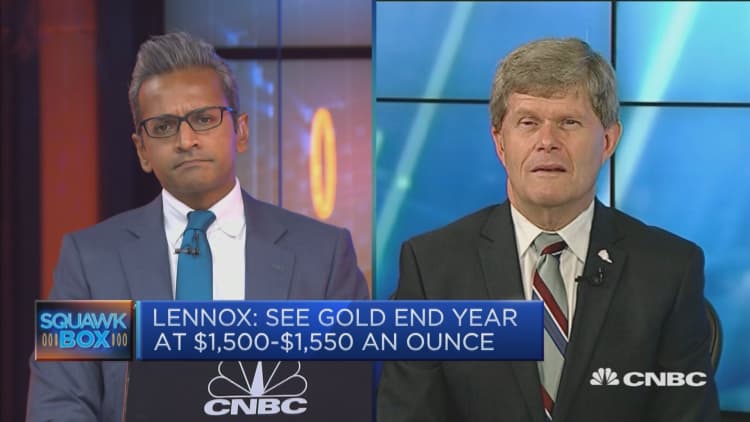Negative yields on global government debt reveal a distorted market rather than the strength of a country's economic profile, credit rating agency Fitch has warned.
Around $15 trillion of government-issued global debt now trades with negative yields, according to figures released by Deutsche Bank last week. The trend reflects the popularity of such types of bond as investors hunt for safer assets to park cash.
The effect of negative rates is that governments are essentially getting paid to borrow money. German debt — considered the safest in Europe — is now offering a negative yield out to repayment terms of 30 years.
In times of uncertainty and a challenging market environment, investors tend to move their investments from riskier assets into safe-havens like gold and government bonds, thereby bumping up demand and prices. Bond yields move inversely to prices, and hence have been turning negative.
Fitch said Tuesday that there are now nine countries issuing 10-year bonds at prices that would return a negative yield to maturity of the bond. The ratings agency warned, however, that capital piling into a country's issued debt didn't necessarily reflect the stability of that economy.
"While lower government bond yields are generally associated with stronger sovereign credit profiles, Fitch thinks the latest moves are partly a continuation of the distortion created by quantitative easing (QE) over recent years," Fitch said in its note. Quantitative easing, or large-scale asset purchases, is where a central bank buys trillion of dollars' worth of government bonds in order to further boost lending and stoke inflation.
The agency's sovereign ratings team added that while lower rates can eradicate the interest that countries must pay, it will do so only in the short term, noting that the average euro zone sovereign debt contract is outstanding for almost seven-and-a-half years.

Fitch warned that the sluggish global conditions that have depressed yields and lowered interest rates reflect a lack of growth that will ultimately hurt government spending pots. It added that when rates do eventually rise, governments could find themselves struggling to reduce debt at a time when more cash needs to be found to support an ageing population.
Gold bounce
Gold prices have rallied 17% so far this year and set fresh six-year highs on Tuesday when the price of buying the metal reached $15,526 per ounce. Investors see the precious metal as another haven when equities, some currencies, or other assets feel risky.
Risk-off sentiment has been spurred by a cocktail of events including the ongoing trade war between China and the U.S, protests in Hong Kong, anemic growth in the euro zone and Japan, and recent political instability in Argentina.
Negative yielding bonds imply investors and central banks are currently predicting a continued low-yield environment. Gold offers no returns other than any rise in capital value, so if other assets have little or no yield then the appeal of the yellow metal grows.
David Lennox of Fat Prophets told CNBC's "Squawk Box Asia" Monday that the opportunity cost of holding gold to holding a bond is now at least "nil" because of negative bond yields around the world.
Lennox predicted that gold will sit between $1,500 and $1,550 per ounce between now and the end of 2019.

In June, Marc Chandler of Bannockburn Global Forex told CNBC he's also bullish on gold prices in part because lower interest rates will soon drag the U.S. dollar lower. Like oil, gold is priced in dollars meaning that the price of the metal and the currency's strength hold an inverse relationship. Chandler estimated that gold could rise toward $1,700 per ounce.


